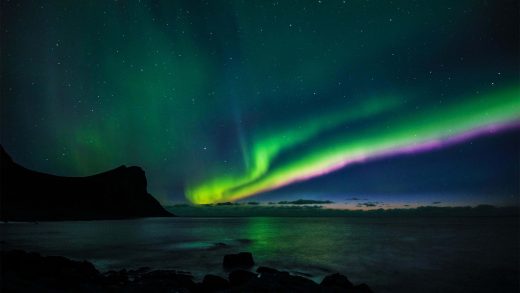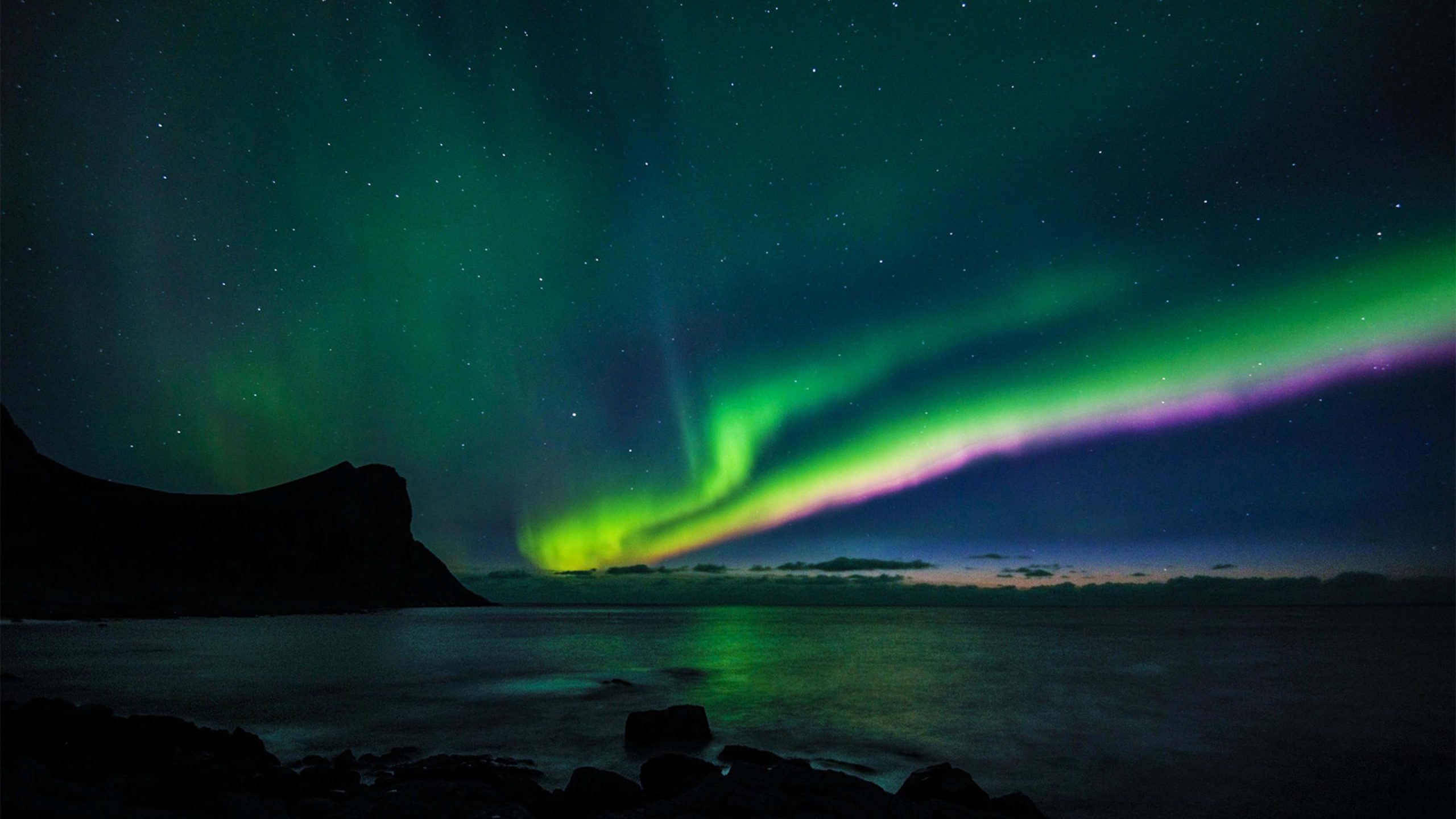Northern lights watch: How to see a rare aurora borealis across the U.S. this weekend
Northern lights watch: How to see a rare aurora borealis across the U.S. this weekend
Thanks to a severe solar storm, you may be in for a spectacular show.
BY Shannon Cudd
Depending on your location and the weather conditions, the night sky may be putting on a spectacular show for you this evening. It is predicted that a severe solar storm will supercharge the northern lights, creating magical displays as far south as Alabama.
On Thursday, the National Oceanic and Atmospheric Administration’s Space Weather Prediction Center issued a severe geomagnetic storm watch. This is the first time this has happened since 2005. The storm will occur due to multiple solar flares and eruptions from the sun, and could last the whole weekend.
“We have a rare event on our hands,” Shawn Dahl, a service coordinator at the Space Weather Prediction Center in Boulder, Colorado, explained to NBC News. This weekend, there is a good possibility that the northern lights will be seen “as far south as Alabama and Northern California,” where they are not normally visible.
To see where and when the northern lights are likely to be visible, check the Space Weather Prediction Center’s aurora dashboard here. Forecasters are currently predicting that the solar storm could start as early as 8 p.m. ET on Friday.
This outwardly beautiful natural phenomena is actually kind of violent. The northern lights, or aurora borealis, occur when energized particles from the sun speed into Earth’s upper atmosphere. But don’t worry, the Earth’s magnetic field has our back and protects us. As part of this protection, the magnetic field forces the particles toward the poles, causing a dazzling display of color.
The pretty colors are determined by the Earth’s atmosphere’s chemical composition. “Every type of atom or molecule, whether it’s atomic hydrogen or a molecule like carbon dioxide, absorbs and radiates its own unique set of colors, which is analogous to how every human being has a unique set of fingerprints,” Billy Teets, director of Dyer Observatory at Vanderbilt University, explained to Space.com. “Some of the dominant colors seen in aurorae are red, a hue produced by the nitrogen molecules, and green, which is produced by oxygen molecules.”
The spectacle of northern lights comes with a cost. There is the possibility that communications and power grids for satellites in space could be interrupted. But thankfully, the Space Weather Prediction Center is already on it and has notified the operators of the systems so they can take precautions.
Meanwhile, the rest of us can breathe easy, and possibly enjoy the view of the night sky this weekend.
ABOUT THE AUTHOR
(16)



